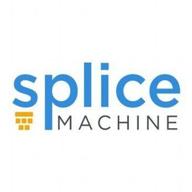Data Warehouse
The Evolution of Data Warehousing: Scaling for the Cloud and Big Data Analytics
Introduction
Over the past few decades, data warehousing has become an integral part of modern IT infrastructure. It allows organizations to store, manage, and analyze vast amounts of data for better decision-making. However, with the advent of cloud computing and the rise of big data analytics, new challenges and opportunities have emerged. This article explores the evolution of data warehousing, focusing on cloud-based solutions, implementation challenges in legacy systems, best practices for scalability, and the architecture required to support big data analytics.
The Power of the Cloud: Cloud-based Data Warehousing Solutions
In recent years, cloud computing has revolutionized the way organizations store and process data. Cloud-based data warehousing solutions offer numerous advantages over traditional on-premises systems. They provide scalable and elastic storage, allowing businesses to seamlessly expand their data warehousing capabilities as their needs grow. Moreover, these solutions offer enhanced accessibility, enabling users to access data from anywhere, anytime, and collaborate more efficiently.
Legacy Systems: Implementation Challenges and Considerations
Implementing a data warehouse in legacy systems can present unique challenges. Legacy systems often have complex and heterogeneous architectures, making it difficult to integrate and consolidate data from various sources. Moreover, these systems might lack the necessary processing power and storage capacity to handle the ever-increasing volumes of data. Data migration and transformation can be time-consuming and require careful planning to ensure data integrity and consistency. Organizations must carefully evaluate their existing infrastructure and consider modernization efforts to overcome these challenges.
Scalability: Best Practices for a Growing Data Warehouse
Scalability is a crucial factor when designing and managing a data warehouse. As data volumes continue to grow exponentially, it is vital to adopt best practices that ensure the scalability of the system. One key approach is the use of distributed computing and parallel processing techniques. By dividing data and processing tasks across multiple nodes, organizations can achieve high performance and handle increasing workloads effectively. Additionally, implementing data partitioning and indexing strategies helps optimize query performance and facilitates faster data retrieval.
Unleashing the Potential: Data Warehouse Architecture for Big Data Analytics
With the emergence of big data analytics, organizations are now leveraging their data warehouses to gain valuable insights and drive strategic decisions. To support big data analytics, the architecture of the data warehouse must evolve. It requires the integration of technologies like Hadoop and Apache Spark to process and analyze massive datasets efficiently. Implementing a data lake alongside the data warehouse allows organizations to store and process raw, unstructured data, enabling advanced analytics and machine learning algorithms to uncover hidden patterns and correlations.
Conclusion
The field of data warehousing is constantly evolving to meet the demands of modern businesses. Cloud-based data warehousing solutions provide flexibility and accessibility, while overcoming traditional infrastructure limitations. Implementing data warehouses in legacy systems requires careful planning and modernization efforts to overcome integration challenges. Scalability remains a critical consideration, with best practices focusing on distributed computing and optimized query performance. Finally, the architecture of data warehouses is adapting to support big data analytics, allowing organizations to unlock the full potential of their data. By embracing these advancements, businesses can stay at the forefront of data-driven decision-making in today's rapidly evolving digital landscape.


4 Review
SQream DB accelerates analytics on massive datasets. With SQream DB, SQL queries are reduced from days to hours and hours to minutes, so you can analyze much more of your data, and gain new and more accurate business intelligence. SQream DB enables data scientists and analysts to run ad-hoc queries on terabytes to petabytes of raw data directly, for…
Read more about this company

4 Review
BI360 Data Warehouse is a data warehouse app built on the Microsoft SQL Server system that lets businesses combine and manage various types of data.


4 Review
Etleap simplifies and automates ETL. Etleap's data wrangler and modeling tools let users control how data is transformed for analysis, without writing any code. Etleap monitors and maintains data pipelines for availability and completeness, eliminating the need for constant maintenance, and centralizes data from 50+ disparate sources and silos into your…
Read more about this company

4 Review
XoroLMS is a cloud based labor management solution which integrates with existing WMS, ERP, and Payroll systems to automate the cumbersome data-crunching process and provides one platform to define, measure and track Individual productivity as well as KPIs in real time. XoroLMS is fmedium to large scale warehousing and distribution companies who are…
Read more about this company
3 Review
AnalyticDB is a real-time Online Analytical Processing (OLAP) managed database cloud service that can crunch enormous amounts of data.



3 Review
“Creating machine learning models that learn across all of our customers without aggregating any data. Now that’s a killer app.” - Lead Data Scientist at a Fortune 500 Company Introducing DataFleets. The world's first cloud platform for unified and privacy-preserving enterprise data analytics powered by Federated Learning. It's never been easier to…
Read more about this company

3 Review
TImeXtender is the fastest way to build a modern data estate, allowing organizations to connect multiple data sources, catalog, model, move, and report on the full lifecycle of data -- in a single application that prepares data for analytics and AI. TimeXtender is a cohesive data management platform for Microsoft on-premise database technology and Azure…
Read more about this company

3 Review
Powered by the latest AI, cloud and automation technologies, the TrueCue Platform has been built exclusively for the Microsoft Azure cloud to accelerate and simplify the journey to an enterprise-grade data warehouse. Designed by data management experts to be owned and run by the business function but governed by IT, the TrueCue platform makes the…
Read more about this company

3 Review
Firebolt's Cloud Data Warehouse delivers extreme speed and elasticity at any scale solving your impossible data challenges. Its unique technology combines the best of high performance database architecture with the infinite scale of the data lake, enabling you to perform analytics at jaw-dropping speed across terabyte and petabyte scale. Built on a…
Read more about this company

3 Review
DataArchiva whitepaper features a comprehensive list of technical resources covering topics such as Salesforce data archival, data storage, data security etc.

3 Review


3 Review
ZAP Data Hub is the fastest way to deliver accurate, trusted financial and operational reporting in BI tools including Tableau and Power BI. We have optimized solutions for Microsoft Dynamics, the Sage portfolio, Salesforce, SAP Business One, SYSPRO, and smart data connectors for many other datasources. Founded in 2001, ZAP is a global software company…
Read more about this company

3 Review
Acho is a place where you can find, process and publish data. No coding required, you may integrate different databases in one place, build complex data pipelines and publish data to wherever you want.


3 Review
Datagres PerfAccel is a data management platform that delivers real time optimized server and storage performance for applications.


3 Review
Rubrik delivers instant application availability to hybrid cloud enterprises for recovery, search, cloud, and development. By using the market-leading Cloud Data Management platform, customers mobilize applications, automate protection policies, recover from Ransomware, search and analyze application data at scale on one platform. From days to seconds…
Read more about this company

3 Review
Springbord is a leading global information service provider that develops custom data acquisition & processing solutions for a broad spectrum of industries.


3 Review
Indigo DQM is high level data management, query and reporting system designed to maximise data assets, information and intelligence.

3 Review


3 Review
The Splice Machine database is built on two technology stacks: Apache Derby, a Java-based, ANSI SQL Database, and HBase/Hadoop, a proven distributed computing infrastructure.
- Data warehouse software is a specialized tool or platform designed to facilitate the process of creating, managing, and analyzing data warehouses. It provides functionalities for data extraction, transformation, and loading (ETL), data modeling, querying, and reporting. Data warehouse software helps organizations consolidate and organize large volumes of structured and sometimes unstructured data from different sources, making it easier to derive insights and support decision-making.
- Using data warehouse software offers several benefits. It allows organizations to centralize their data, making it easier to access and analyze. Data warehouse software also enables efficient data integration from multiple sources, providing a unified view of the organization's data. This leads to improved data quality, consistency, and reliability. Additionally, data warehouse software often includes advanced analytics capabilities, allowing businesses to derive valuable insights and make data-driven decisions.
- Data warehouse software differs from traditional databases in several ways. While traditional databases are optimized for transactional processing, data warehouse software focuses on analytical processing. Data warehouses are designed to handle large volumes of data and complex queries that involve aggregations and historical analysis. Moreover, data warehouse software often includes features like data modeling, ETL processes, and advanced analytics functionalities that are specifically tailored for data warehousing tasks.
- When selecting data warehouse software, several factors should be taken into account. First and foremost, the scalability and performance of the software are essential, as they determine how well it can handle growing data volumes and user demands. Integration capabilities with various data sources and formats are also crucial to ensure smooth data extraction and consolidation. Additionally, considering the ease of use, security features, support for advanced analytics, and compatibility with existing IT infrastructure are important factors to evaluate.

